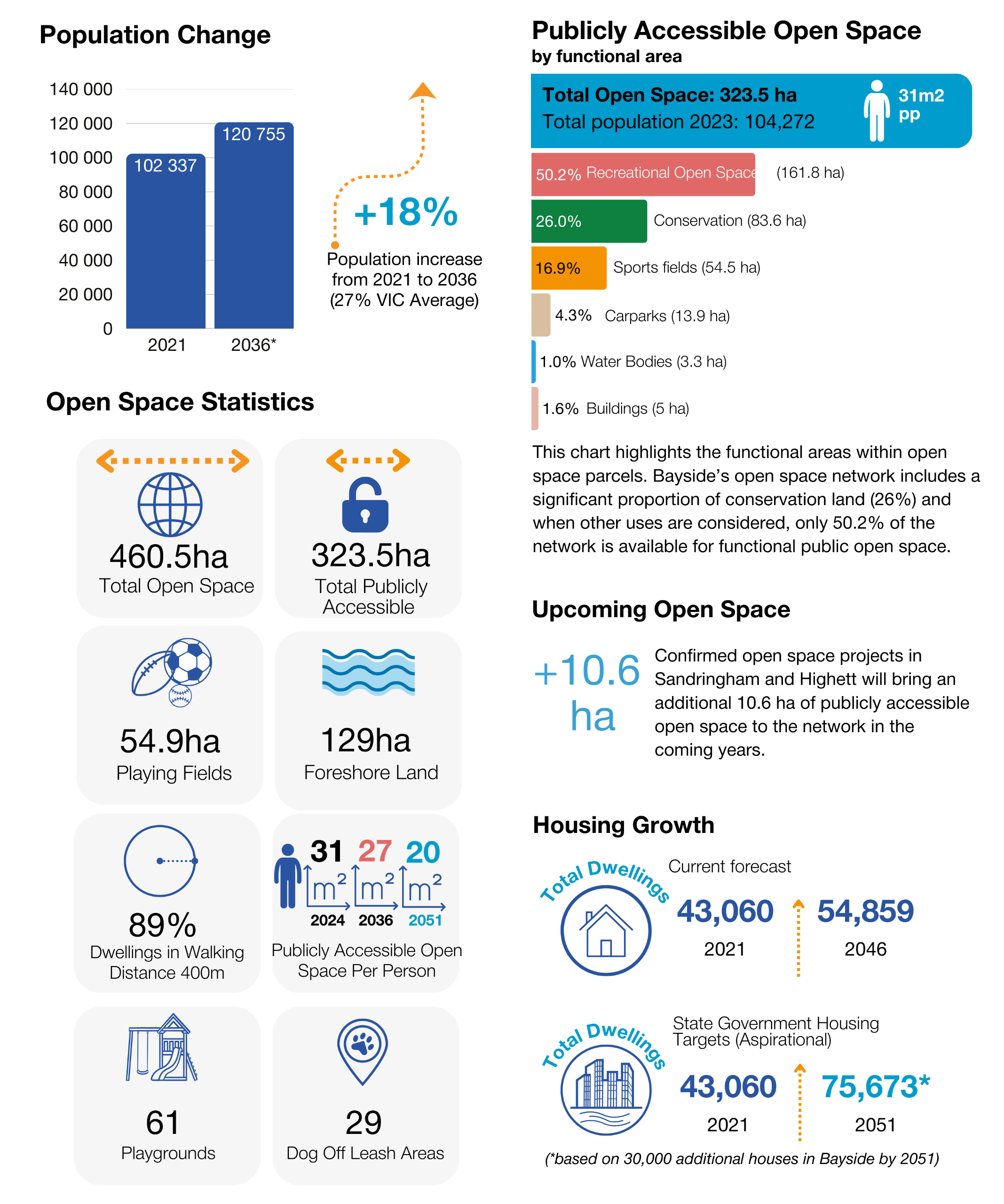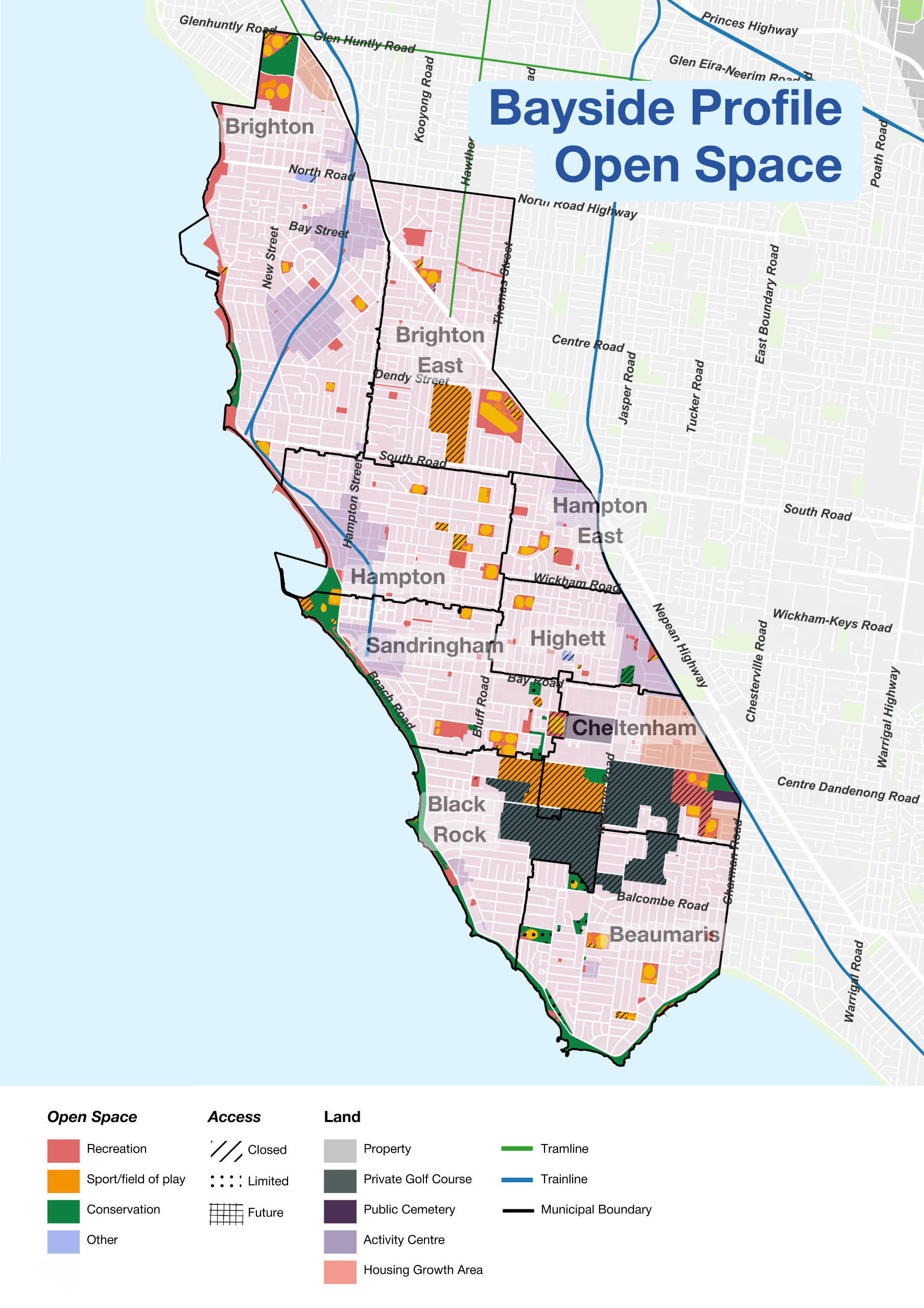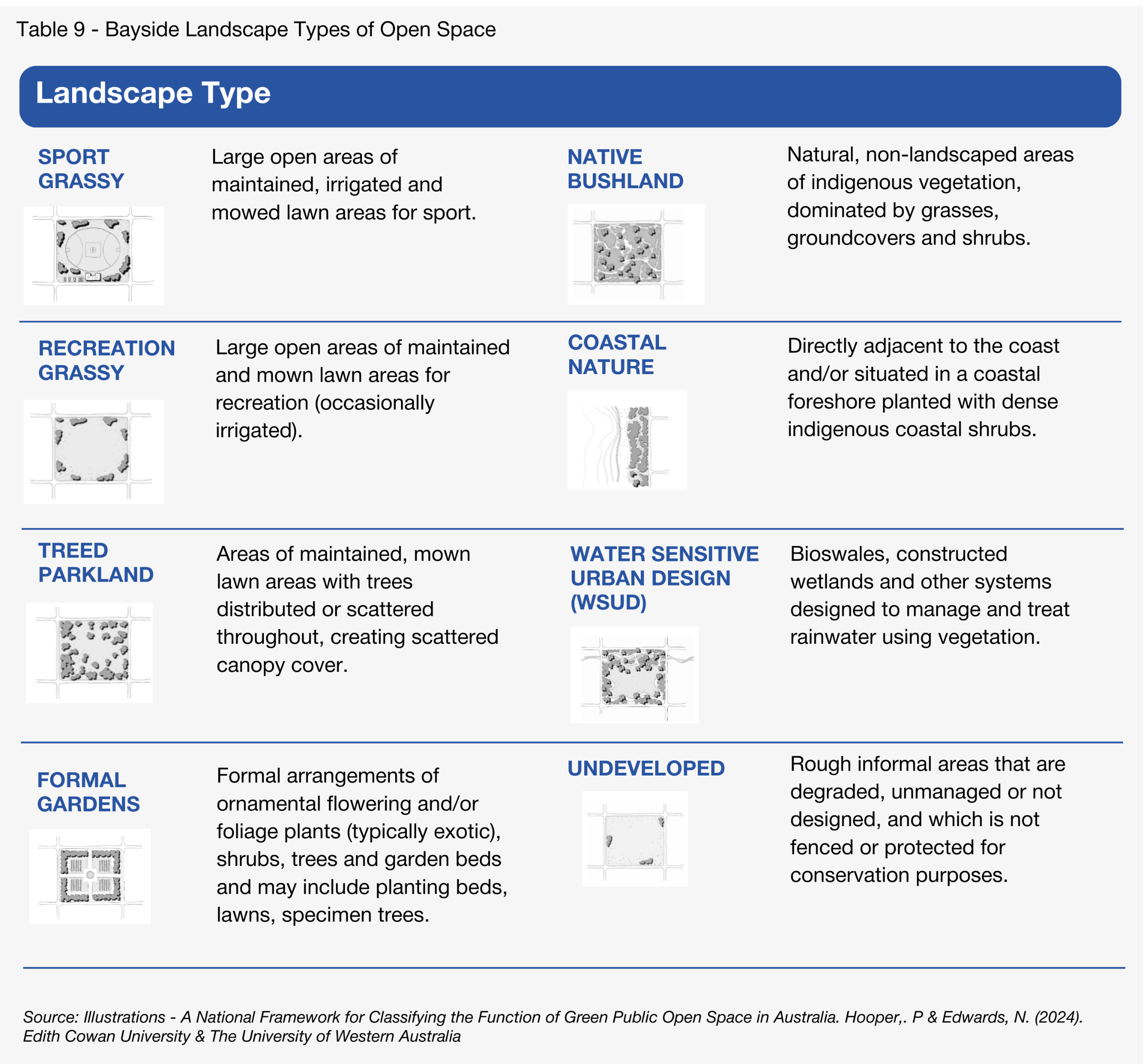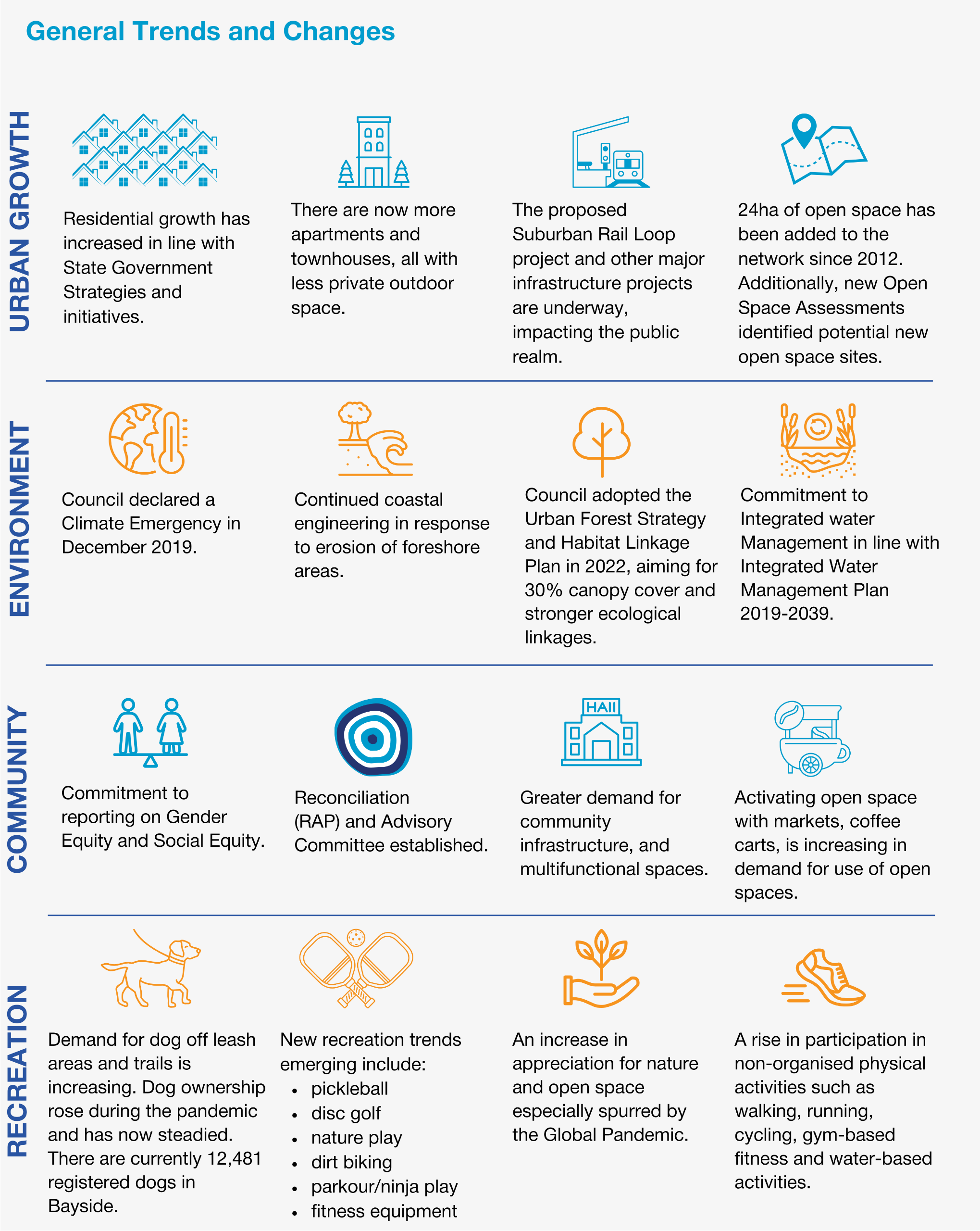Protect
Preserve and enhance Bayside’s natural environment and open space legacy.
- Balance environmental protection with recreation using sustainable practices and climate resilience.
- Prioritise biodiversity, equitable access, and health benefits.
- Safeguard conservation areas within parks and focus on sustainability and climate adaptation.







